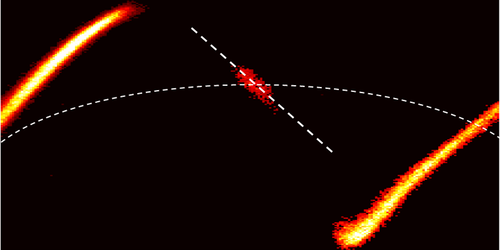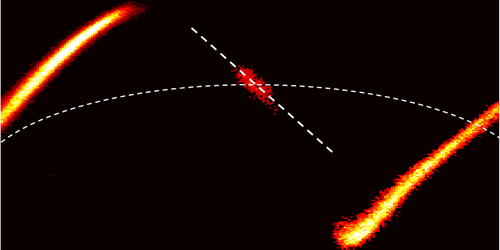A Clearer View of the Atomic World
Ultracompact bunches of electrons are an essential tool for deducing the atomic structure of a material and for capturing the rapid motion of the material’s atoms. But when millions of electrons are crammed together into a bunch, they repel one another. This repulsion increases the width of the electron bunch, reducing the spatial and temporal resolutions with which the tool can operate. Now researchers have found a way to capitalize on electron repulsion, using the repulsion between electrons in one bunch to compress those in another. Their approach could create electron beams with shorter electron bunches, enabling researchers to study molecular processes that occur on time scales currently too fast to capture, such as proton transfer or the oscillations of molecules made of lightweight atoms.
The idea of Dao Xiang, of the Shanghai Jiao Tong University, and colleagues is to constrain the electrons within a given bunch via the repulsive interactions between it and its two neighboring bunches. The electric repulsion from the leading and trailing bunches compresses the central “probe” bunch, preventing the electrons it contains from flying apart. Using this approach, the team squished the probe bunch laterally by about a factor of 3, increasing the technique’s spatial and temporal resolution threefold. They also eliminated variations in the arrival times of bunches—so-called timing jitter—introduced in other beam compression methods, further improving resolution. This narrower bunch was not quite as small as the shortest bunches in some other experiments, but the improvement demonstrates the potential of the new technique.
The team says that future optimization of the experimental parameters could enable researchers to generate electron bunches with both a pulse width and a timing jitter shorter than 50 fs, the state-of-the-art in this field.
This research is published in Physical Review Letters.
–Christopher Crockett
Christopher Crockett is a freelance writer based in Montgomery, Alabama.





